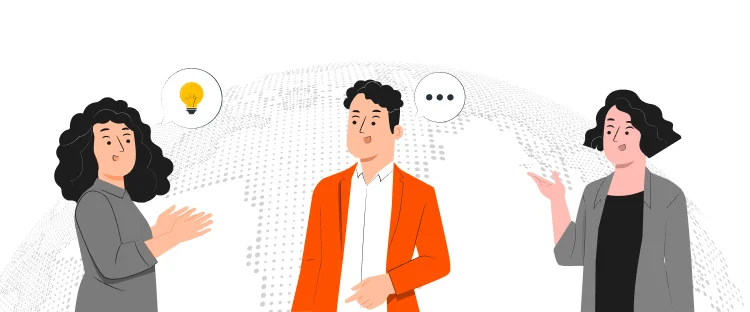In today’s fast growing economy, some countries are at the forefront of global revolution, paving ways for cross-border trade, businesses and investments. It comes as no surprise to anyone when commercial giants such as the United States, China and India are included in this list.
One would expect one of these countries to have the most number of languages spoken.
But, this is not the case.
The country with the most number of languages is not China, it is not India, nor is it Switzerland. It is Papua New Guinea.
Now, this is a country you don’t get to hear much about. Yet, Papua New Guinea has a whopping number of 820 languages. This tiny Papua New Guinea is as big as the state of California, but despite its small size, it is the most linguistically diverse country on the planet. According to Ethnologue, there are approximately 7102 known languages spoken in the world today—and Papua New Guinea speaks 820 of them.
Read: How Many Languages Are There in the World
There are a number of reasons why Papua New Guinea is an amalgamation of so many languages. For a start, the island has been inhabited by humans for as long as 40,000 years!
This means that there was ample time for languages spoken by original settlers to mutate and evolve. In fact, although the people living in New Guinea and Australia have emerged from the same line of descendants, the languages they speak—the native Australian and native New Guinea languages are so different from each other that it is hard to believe they were once a part of the same language.
The second reason is that the New Guinea area is a geographically fragmented one. The villages in New Guinea are cut off from the neighboring regions by obstacles of steep mountains, dense forests, rivers and swamps. Due to this, New Guinea has many small communities with different lifestyles—all having lived separately from each other for thousands of years.
Thirdly, New Guinea’s languages have a relatively small number of speakers. Enga, a native New Guinea language is spoken by approximately 165,000 members of an indigenous tribe, whereas other communities have different native languages at their backs.
In Papua New Guinea, there are 3 official languages—Tok Pisin, Hiri Motu and English.
Tok Pisin is an English-based Creole language that started out as a combination of two different languages and evolved into a distinct language of its own. Some 121,000 people in New Guinea grew up speaking Tok Pisin as their first language while 4 million of the country’s residents are fluent in it. It is the language of Parliament and commerce and mainly used in the Central, Western, Milne Bay and Oro province.
Hiri Motu, a pidgin language is a combination of the Motu language and is understood by approximately 120,000 New Guineas as a second language. Although it is neither a creole nor a pidgin language, it possesses some features of both languages. Hiri Motu has a history of long pre-dating European contact when it developed among Motu people and their neighbors on the southeast coast of New Guinea.
The English language is spoken by only 1-2% of the population and is mainly the medium of business. It is the teaching language in many schools after elementary level. Since many people do not complete formal education, the number of English speakers are low.
After Papua New Guinea, Indonesia has an astounding 742 languages being spoken by the residents. Nigeria, India and United States follow close behind with varying number of languages.
One would generally think that Europe is the region with the most diverse languages but the picture is different. If Europe is broken down in blocks country by country, it would be discovered that there are a relatively few spoken inside each one.
In fact, there are more number of languages in Australia, Canada, Brazil and the Philippines than any European country.
Read: Most Spoken Languages in Europe
It has been proved time and again that a region or a country with diverse group of languages is exposed to a variety of cultures and traditions. Yet, these diverse languages harbor communities that have a language history as diverse as the dialects themselves.
Although this diversification of languages is a sign of a distinct and diverse group of people, it must not be forgotten that with the passage of time, old languages die and new ones emerge to take their place.
To ensure that a society preserves its historical languages, it is imperative to pass them on to the youngsters. Only then these communities will be able to preserve the cultures, traditions and dialects associated with the language of their ancestors.

Colorado is said to be one of the best places to do business because the business environment is very friendly
Read More
The global marketplace has become an attractive place for brands and businesses, where they strive to create a presence of
Read More
CAD, or computer-aided design and drafting (CADD), is the use of computer technology for design and design documentation. CAD software
Read More
Many global companies, foreign governments and Iranian are hoping to see an increase in investment in Iran after declaring the
Read More
Artificial intelligence has taken a big space in almost every industry. There is also a widespread acceptance that AI is
Read More
Persuasion is all about manipulating other people behavior. At first it might sound immoral but it doesn’t have to be.
Read More
Now days everyone is searching for good ideas for their company they wanted to be more creative, they wanted to
Read More
Technology has now much diverse roots in this age of development. Now it is not wrong to say, that you
Read More
Localization is the practice of altering the functional properties of a product and also its characteristics. This is easily done
Read More


Document Translation
Professional document translation by native expertsApp Localization
Get more downloads by adapting your app for different target marketsVideo Translation
Multilingual translation and subtitling servicesWebsite Localization
Adapt your website into multiple contexts for global reachSoftware Localization
Adapt your software for global usersGame Localization
Reach new players with localized gameplayMTPE
Refine AI translations for natural fluencyBusiness Translation
Professional translation for business documents and websitesDTP & File Conversion
Professional DTP and File conversion, supporting multiple file formatsProofreading
Perfect your content with expert review© Copyright 2025 MarsTranslation